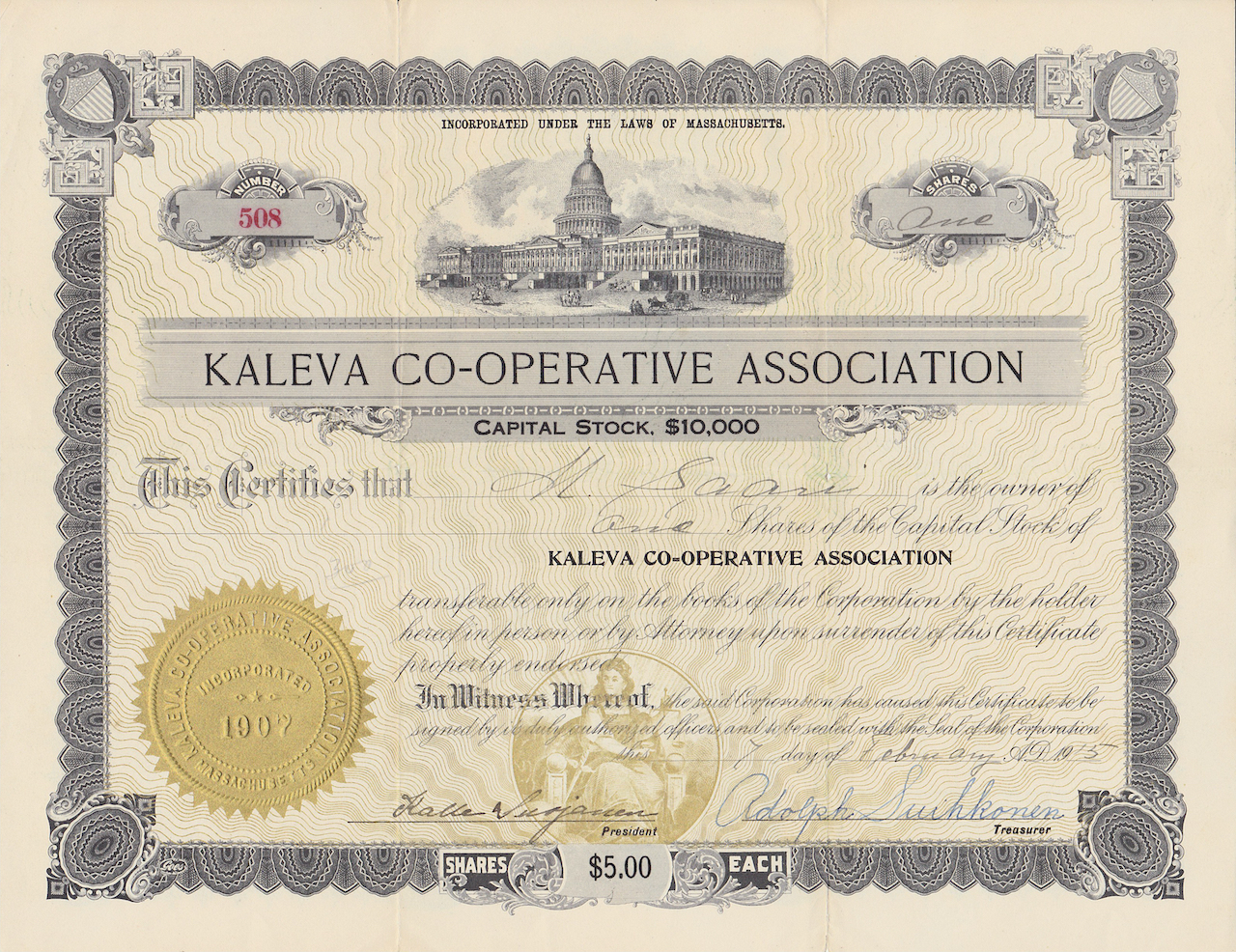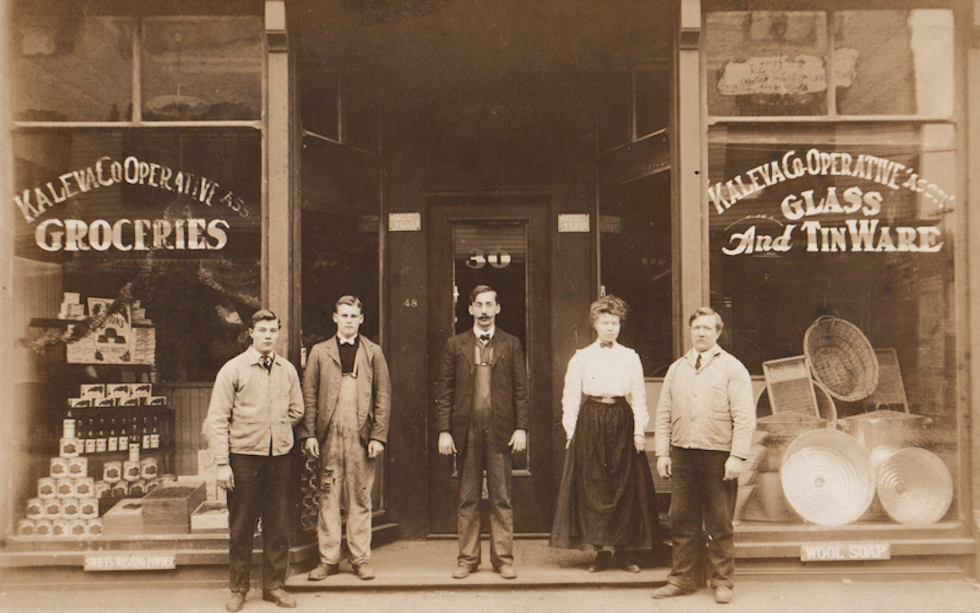Employees of the Kaleva Cooperative Association in front of their Main Street shop, ca 1915. Photo by Geo. D. Elson, courtesy of the Maynard Historical Society.
Co-operative societies, which allowed immigrant workers to save money and express their communal values, have a long history in Maynard. From the 1870s to the 1970s, the town was host to at least eight cooperative societies, which provided low-cost food and other essential goods for mill workers’ families as well as social and educational activities. Their operating philosophies ranged from small-scale capitalism to socialist and communist principles.
In December 1875, English and Scottish textile workers organized the Riverside Co-operative Association, which bought grocery products in Boston and sold them at wholesale prices in Maynard. The Riverside Co-op was organized on the Rochedale model developed by workers in England in 1844. Anyone could join the coop for a small membership fee, its profits were distributed through an annual dividend, and the co-op was democratically controlled (one member, one vote). By 1903 the Riverside Co-op was the largest grocery business in Maynard, with around 400 members. Although it disbanded in 1936, the co-op once housed a grocery store, meeting room, and banquet hall on the first two floors of the building that still occupies the corner of Nason and Summer Streets.

Starting in the early 20th century, immigrants from Finland played a leading role in Maynard’s cooperative enterprises. Local members of the Finnish Workingmen’s Socialist Society began the Kaleva Co-operative Association in 1907, after the Riverside Co-op declined their request to hire Finnish-speaking store clerks. The Kaleva Co-op later joined forces with other Finnish cooperative societies in Massachusetts and changed its name to the United Co-operative Society of Maynard in 1921.
The United soon became the largest co-op in Maynard and one of the top ten in the country. It was also the longest running, operating from 1907 to 1973. At its peak, it had more than fifty full-time employees. The society offered a restaurant, service station, and appliance store, as well as being a distributor of coal, wood, grain, fertilizer, baked goods, and milk. Besides the store, the co-op featured educational programs, dances, theatrical events, and summer camps for children. In 1947 more than half of Maynard residents were members of the United, and during its first fifty years, the co-op grew from 184 members to nearly 3000. Moreover, the society did roughly a third of its business with non-Finns who didn’t belong to the co-op.
Most of Maynard’s other cooperative societies tended to serve specific immigrant groups who were also members. For example, the town’s Polish, Lithuanian, and Russian populations began the International Co-operative in 1911. Many of these organizations later struggled financially and some were forced to close after extending credit during the Great Depression. Nevertheless, Maynard’s cooperative tradition has continued into the 21st century, with current residents now working to create the Assabet Village Co-op.
–Amanda Judah


